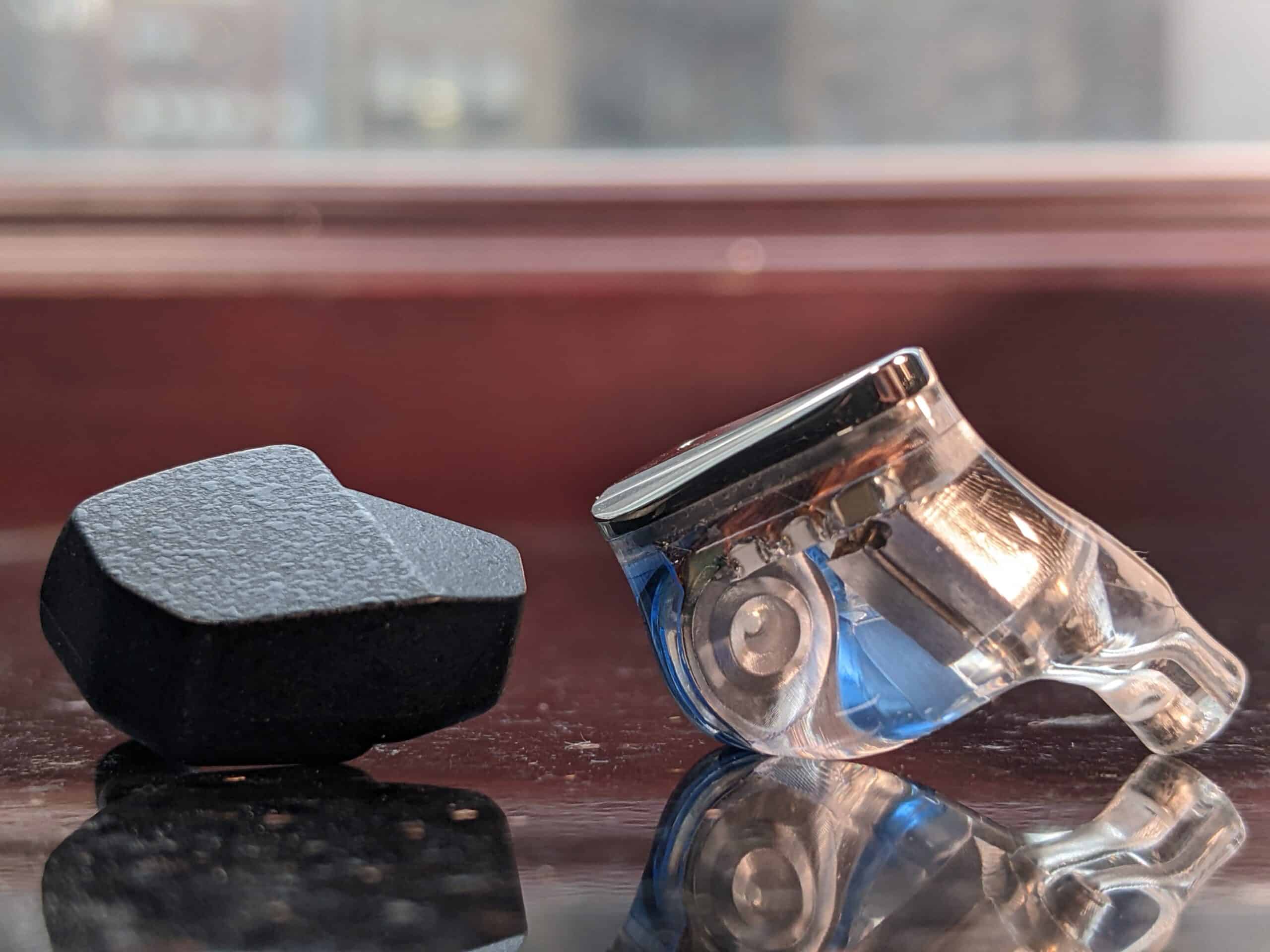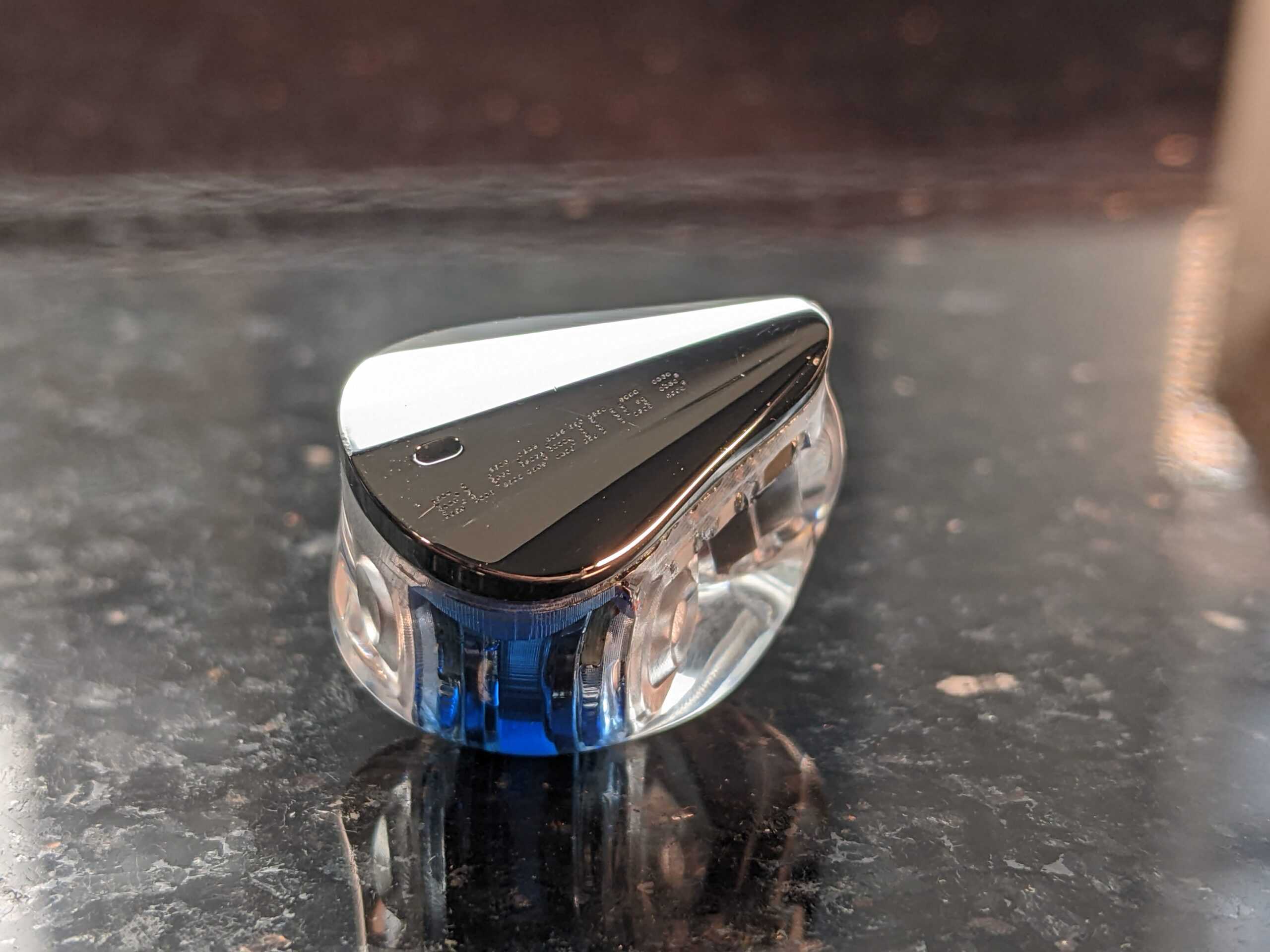MoonDrop Blessing 3 vs. Final Audio A5000 Comparison Review
I recently wrote an obligatory MoonDrop Blessing 3 vs. Blessing 2 review, but I won’t lie; the match-up I was actually itching for was the Blessing 3 vs. Final Audio’s A5000. While many manufacturers are racing to the top to see who can come out with the first 20 driver, $5000 IEM, I have a lot of respect for companies like MoonDrop and Final who play the market from the bottom up, offering impressively high quality at reasonably affordable price points. The Final Audio A5000 is on the market for $279 while the Blessing 3 comes in at $319 – perhaps a moderate price difference for some, but I’ll more-or-less treat them as equals in a common tier. I’ll be going over what comes with both IEMs, their physical and technical design, and of course, what they sound like relative to one another.
What’s In the Box?

| MoonDrop Blessing 3 | Final Audio A5000 |
|
|
Look and Fit

Starting with fit, the Final Audio A5000 and MoonDrop Blessing 3 both offer exceptional comfort, but take opposite approaches. The Blessing 3 is unapologetic when it comes to its chunky build that visibly bulges from a listener’s ears. I take no issue with its size, however, as the thoughtfully smoothed-over physical design prevents it from straining or agitating any part of my conchae or ear canals. I’m also feeling forgiving towards its chonk considering the 6 drivers contained on each side, but more on that shortly.
The A5000, on the other hand, finds its ergonomic comfort in its smaller design. The chamber side of the IEM is mostly flat, and rests flush against a listener’s concha. While it has a more angular character to it than the Moondrop Blessing 3, the edges on the corners of the housing round out at the key points that make light contact with a listener’s outer ear. I find both IEMs to contain a high level of comfort and don’t really have an outright preference. Perhaps the simple and succinct consideration to be had in this department is the Final Audio A5000’s snug qualities versus the more casual and relaxed fit of the the Moondrop Blessing 3.

In terms of style and aesthetic, we again see some pretty major differences. The Blessing 3 is the flashiest iteration of the MoonDrop Blessing yet, with its cutesy, pixelated “MoonDrop Blessing 3” font sitting on its glossy, machined steel face plate. We also see the transparent medical-grade resin featured in plenty of other MoonDrop designs composing the housing, leaving the internal working of the IEM entirely visible. There are a lot of textures competing with one another in this design, but I find it to be a coherent blend.

While the MoonDrop Blessing 3 sports a fun and spunky outfit, the Final Audio A5000 is the type of IEM that only wears black turtle necks. It’s housing is opaque, and composed of ABS resin with a special “shibo” finish like the A3000 and A4000. It’s angular, minimalist, distinctly modern, and takes itself a bit more seriously than the Blessing 3 (aesthetically, that is).
Technical Designs and Specs
The biggest technical enhancement we see in the Moondrop Blessing 3 from its previous generation is the inclusion of a new dynamic driver, in addition to the 1 DD and 4 BA driver configuration that went into the Blessing 2. To date, I can’t recall trying an IEM at this price point with 2 dynamic drivers, which makes the Blessing 3 an impressive oddball. It’s dual dynamic drivers were arranged in a system that MoonDrop has catchily dubbed “H.O.D.D.D.U.S.” (Horizontally Opposed Dual Dynamic Driver Unit System), which symmetrically places them in close proximity to one another and implements various 3D printed hardware filters to regulate their interplay.
With the A5000, there’s a little less to go over. We see a single 10mm dynamic driver, with Final Audio’s proprietary F-Core Du design principle. F-Core Du serves to reduce distortion to a near-zero level.
A more complex design doesn’t inherently mean a better design, and as I’ll detail below, the competition is pretty stiff between these two IEMs.
| Spec | MoonDrop Blessing 3 | Final Audio A5000 |
| Drivers | 2 DD, 4 BA | 1 DD with F-core du |
| Frequency Response | 10 Hz – 30 kHz | N/a |
| Impedance | 14.8 ohms | 18 ohms |
| Sensitivity | 120 dB | 100 dB |
Sound Stage and Imaging
Both the Final A5000 and Moondrop Blessing 3 perform exceptionally well for their price points when it comes to their spatial character. The Blessing 3 finds significant width that’s distinctly felt on hard pans; and while it pushes more depth into it’s stage than the Blessing 2 and manages a modest holographic character, parts mostly stay close to the face if not quite on the face. It also possesses a pretty satisfying internal 3D quality that places parts inside of my head rather than around it.
While the Blessing 3 is solid and a couple of degrees above average when it comes to its staging and imaging, the A5000 is simply fantastic in its spatial layering and could be considered sound stage royalty for the market tier in which it finds itself. Height, width, and depth are all abundantly present, and position parts as if they reside on finely plotted points on a 3D grid. Vocals perch dead center above the forehead, while instruments find a deep and wide expanse, sometimes managing to push themselves behind the head.
Both units have a lot to offer here; but though soundstage may be one of the most subjective features of a given IEM or headphone, I can’t help but think that most people would agree: there’s something particularly special about the Final Audio A5000’s accurate and expansive staging. In my opinion, the Blessing 3 is outdone here; but for that matter, so is nearly every IEM in this price range.

Lows
The Moondrop Blessing 3 sees a new low end tuning from its sophomore predecessor, with high bass amplitudes getting redistributed to its subs and mid bass. As it so happens, this brings its low end closer in line with the A5000 than what we heard from the Blessing 2. So, when it comes strictly to balance, we can categorize the bass response on the Blessing 3 and A5000 similarly: 1) not overly eager to color a mix, but powerfully jumping into action on moments of low end impact (kick drums, deep bass notes, etc). 2) Creating a clean separation between its mid range and low end.
However, there’s a distinct difference in their textures that goes beyond balance. The A5000 is firm and fast in its lows, and showcases a high level of detail in its subs and mid bass – it’s simply more analytical. While the Blessing 3 doesn’t suffer from slow or floaty bass, and in fact even delivers some respectable slam, it’s a little more resonant in its delivery. It leaves time for some warm and tasteful blending, whereas the A5000 commands its low end like a tyrant.
Mids
While I more-or-less gave the last two rounds on soundstage and low end to the A5000, the Blessing 3 finds a victory in its midrange. The A5000 has a moderate V-shaped balance, which it only noticeably exposed in parts that heavily rely on center mid frequencies. Really, there are only two occasional mid range casualties: vocals, and snare drums. At times, they lack forceful delivery and are positioned just a little too quietly in a mix.
But if there’s one balance aspect that MoonDrop’s Blessings consistently get right, it’s their mostly neutral and natural mid ranges – and the Blessing 3 might be the most natural Blessing midrange thus far. Vocals, snare drums, guitars – any mid range part that commonly composes the backbone of a mix – sit with a classy and highly intelligible realism.
Though I admit that I’m nitpicking a bit at the Final Audio A5000’s mid range (I do still enjoy it, after all) this is simply a testament to how tight the competition is between these two IEMs. It’s ultimately finer details like these that set them apart from one another.
Highs
The A5000 and Blessing 3 both perform impressively in their treble, and I don’t have much to criticize here for either. However, once again, we hear two different approaches. The Blessing 3 finds just the slightest amount of extra brightness compared to the Blessing 2, but nonetheless, has a much more Harman like character than what’s heard in the A5000. It mostly serves to to preserve realistic high frequency detail, with just little colored brightness in its mid-treble that pulls some higher harmonics out of electric guitars or strings.
The A5000’s treble, on the other hand, goes a long way in delivering the IEM’s distinct and unique qualities. Sure, it has its tight and powerful subs and mid bass, but the A5000 leaves me with a primary impression of airiness. Treble seems thoroughly amplified – and extended – but virtually avoids any trace of becoming harsh, peaky, or shrill. Instead of leaving me with a tonal impression, I hear its bold treble as imparting a fine and smooth timbre that lifts its entire balance, and creates a delicately lightweight contrast from its deep and fast low end.
Overall
Let me be honest by putting my biases upfront: on a strictly subjective level, I connect with the Final Audio A5000 in a very particular and personal way. So if you were to ask me, sure, my preferences lie with Final Audio’s A5000 – in the sense that I like it more than many IEMs that are multiples of its price.
That said, when I approach this with a more objective lens, the Blessing 3 and Final Audio A5000 are worthy peers that serve to make the $250 – $350 range of IEMs one of the most valuable price pockets in the broader IEM market. If you want a firm, gripping IEM with a powerful and analytical low end and a colorful treble profile, Final Audio’s A5000 is there for you. If your values are more in line with a warmer and more emotive low end with a clean and natural mid range presentation, the Blessing 3 is the better choice.
Either way, this was a great review to write. Much respect to both companies for making such high quality IEMs at reasonably attainable price points.
You can purchase the MoonDrop Blessing 3 here and the Final Audio A5000 here from Audio46.
MAJORHIFI may receive commissions from retail offers.








